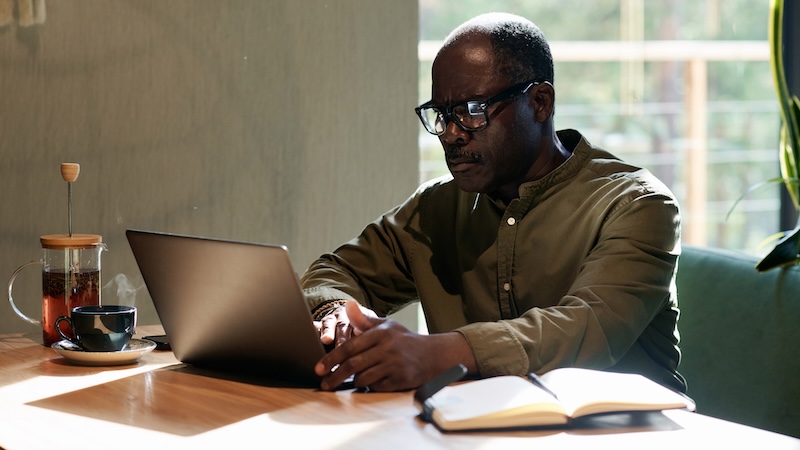Retirement Budgets and ‘Smartening’ Up Your Home
Kiplinger's Personal Finance on how Boomers can improve their finances.
A DO-IT-YOURSELFER? CRUNCH YOUR RETIREMENT NUMBERS
By Jane Bennett Clark
To get a handle on how you’ll spend your time and money in retirement, start making a detailed analysis of your expenses about five years before you turn in your office keys.
“In the first two years, don’t try to clip coupons, and don’t stop going out to dinner,” says David Giegerich, a managing partner of Paradigm Wealth Management, in Bridgewater, N.J. “Live your life so you can get a realistic picture of what you’re really spending.”
Among the obvious expenses: housing, utilities, food, gas, clothing and entertainment. The not-so-obvious? Even if you pay off your mortgage, you still have property taxes and homeowners insurance. Other off-the-radar expenses include annual payments for insurance premiums and future big outlays for, say, a new car or a major trip. And inflation is a factor you can’t ignore. To estimate its effect on your expenses, use the calculator at buyupside.com. Once you’ve assessed current and future expenses, add up future income:
Social Security, based on your top 35 years of earnings, will be a significant piece, more so for low earners than high earners. (For an estimate of your Social Security benefit, go to ssa.gov and click on “Retirement Estimator.”) Include in your calculation any defined-benefit pensions you’ve accumulated, as well as other income – say, from rental property or an annuity.
Then match total household expenses with total income. The shortfall is how much you’ll need to fill in from retirement accounts and other savings.
The beauty of this exercise is that it gives you a chance to adjust the plan, or your expectations, before you quit your day job.
Say the difference between your projected spending and income is $25,000 a year. Multiply the amount by 25 (based on a 25-year retirement) and you get $625,000. If you’re not on course to have the money by retirement, you’ll need to save more or spend less in retirement.
Or you can decide to work longer. Not only does this allow you to accumulate more savings and shorten the time in which you’ll be using them, but it also makes it easier to put off taking Social Security, producing a bigger check later. You get an 8-percent increase in benefits for each year you delay claiming, until you reach age 70. (This idea makes sense only if you have an average or longer life expectancy.) Social Security offers numerous other options for maximizing benefits. (For information on obtaining a customized report for your own benefits, go to kiplinger.socialsecuritysolutions.com.)
A WOULD-BE TECHIE? REMOTE-CONTROL YOUR HOME
By Jeff Bertolucci
You could call it the march of progress. First, technology allowed you to preset your VCR, then to program your TiVo. Now you can watch videos on demand on your phone or tablet. Next up: devices and apps that let you set and reset your home’s systems and appliances.
HOME VIDEO: Got an extra iPad, iPhone or iPod touch? Repurpose it as a home security cam. Just download People Power’s Presence app to an Apple device (free from the Apple App Store; requires iOS 5.0 or higher) and plug it into an electrical outlet. Then aim the camera at whatever you want to watch. (The company sells optional stands, including the $100 Galileo, which rotates 360 degrees on your command.) Motion sensors trigger the video feed; to watch, sign into Presence from another iOS device. Presence Pro video (presencepro.com; $5 monthly or $50 a year) adds several features, including two gigabytes of cloud storage for videos and the ability to make five-minute recordings versus one-minute. The company plans to add the ability to view the feed from a Web browser.
SMARTER LOCK: Copying a key and handing it to anyone who needs to get into your house isn’t necessarily wise. August Smart Lock (august.com; $250) is an innovative alternative: It’s a deadbolt that unlocks via a smartphone app. The Bluetooth-enabled Smart Lock replaces the latch on the inside of your door; the outside hardware remains the same. Using your iPhone or Android phone’s contacts, you send a “virtual key” that allows the recipient to unlock the door wirelessly. Bonus: Smart Lock, which runs on four AA batteries, works with a real key if the juice runs out.
STREAM HEAT: Google’s Nest Learning Thermostat (nest.com; $250) studies your habits and adjusts itself accordingly. For instance, if you lower the temperature a few days in a row at 4 p.m., Nest starts making that change automatically. The mobile app, which works with Apple and Android devices, allows you to check your energy usage and change the temperature settings remotely.
COOL DOWN: The free Wink app (winkapp.com) lets you use your Android or Apple device to control more than 60 home appliances, including lighting systems, thermostats, smoke alarms and sprinkler systems. The most inventive use of the Wink technology may be the Aros Smart Window Air Conditioner ($280), which, like Nest, learns from your usage patterns. It is the product of a collaboration between General Electric and Quirky, a crowd-sourcing site for inventors.


